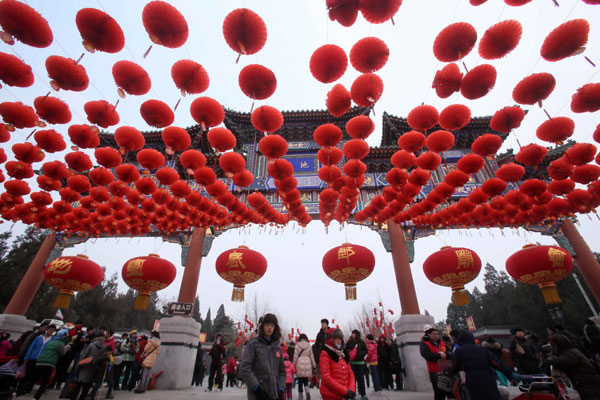
 |
|
Lanterns are a signiture feature of the temple fair at Ditan Park.[Photo by Chen Xiaogen/China Daily] |
Temple fairs, or miaohui, are said to hail back to ancient days, when farmers would offer new year sacrifices to their village gods. The events developed into marketplaces for goods and ideas, where people would peddle their wares and performers would put on shows.
Temple fairs grew in prominence throughout the Ming and Qing dynasties (1368-1911), but essentially evaporated with the founding of New China in 1949, and they were taboo during the "cultural revolution" (1966-76).
The country's first official temple fair after 1949 was in 1985 at Beijing's Temple of the Earth (Ditan Park). Now they are once again an important part of the Spring Festival and they continue to evolve.
The carnivals in parks such as Ditan, Tiantan and others with a long history largely remain true to tradition, and they evoke imperial times and folk memories.
This year marks the 11th Cultural Week for Tiantan Park, or the Temple of Heaven. Between Feb 19 and 23, performers will act as emperors, guards, officials, dancers and musicians and show visitors the solemn ancient worship ceremonies.
As Beijing is a second home for many expats, other fairs have departed from historical orthodoxy, particularly in recent years.
In Shijingshan Amusement Park, the organizers are hosting a "foreign-style" temple fair, which will include Western as well as traditional cultural elements. Organizers said the fair will be similar to a foreign carnival parade and will include a four-dimensional cinema alongside other events.
Performances such as Japanese fan dances, a Korean long-drum dance, Latin dance, a Russian song and dance performance, a cartoon show and children's activities will also feature.
Media Support: | Chinadaily.com.cn | Ecns.cn | People's Daily Online | xinhua.net | |China.org.cn | |cntv.com | |CRI.cn |